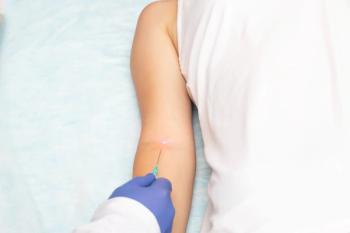
The Key to Better Bipolar I Disorder Control?
What can you (or your pharmacist) do to improve Bipolar I Disorder outcomes?
Patients with bipolar I disorder experience at least one manic episode in life and a mixture of depressive and hypomanic episodes much of their lives otherwise. For comparison, bipolar II disorder is a history of at least one hypomanic and depressive episode without a lifetime history of mania. Comorbid personality, anxiety, and substance use disorders complicate bipolar I disorder management and outcomes. Patients with bipolar disorder are more likely to have suicidality and overdose (intentional and unintentional) requiring emergency care than the general population. Conventional drug therapy alone is often inadequate for complete remission and control in bipolar I disorder.1
The Dader Method of outpatient pharmaceutical care provision is an educational, therapy assessment, treatment recommendation, and counseling process. The pharmacist assesses for process (drug-related) and outcomes problems. Availability, prescription, dispensing, administration, and quality cause process problems. Outcomes problems involve necessity, effectiveness, and security. The pharmacist intervenes to change the quantity of drug, pharmacological strategy, and/or patient education method and then reassess for process and outcomes problems.1
Researchers from Spain applied the Dader Method in community pharmacies to improve blood pressure, total cholesterol, and both in patients with and/or at high or intermediate risk of cardiovascular disease. This study found a clinically significant increase in patients meeting their blood pressure and total cholesterol treatment goals.2
The January 2017 Journal of Managed Care & Specialty Pharmacy issue included a study supporting pharmacist clinical team inclusion to reduce
The EMDADER-TAB randomized controlled trial investigated the impact of pharmaceutical care based on the Dader Method on the use of health care services by patients with bipolar I disorder. This study measured follow-up for one year and applied Kaplan-Meier methods and Cox regression statistical tests to the data. The authors excluded patients with schizoaffective, bipolar II, cyclothymia, personality, or sociopathic disorders, epilepsy, HIV infection, chronic decompensated disease, cognitive impairment, current pregnancy or breastfeeding, and those younger than 18 or older than 65.
Patients receiving “usual care” experienced 9 times more hospitalizations and triple the rate of emergencies than the pharmaceutical care group. However, the pharmaceutical care group had 4 times more unscheduled outpatient visits. Unscheduled outpatient visits among pharmaceutical care patients included dose adjustment (53.4%), administrative procedures (20.0%), adverse drug reactions (13.3%), and psychiatric assessments (13.3%). One and 2 patients had unscheduled outpatient visits for administrative procedures and psychiatric assessments respectively. Unscheduled outpatient visits should be preferred because they are less costly than other forms of patient contact and minimize patient decompensation by promptly identifying the prodromal phase of mania.
The pharmaceutical care group’s Hamilton Depression Rating Scale test scores decreased more than the usual care group’s scores. Variable medication therapies within and between groups had no impact on test scores. The Likert Scale applied to disease severity found the pharmaceutical care patients had greater improvement during the study period. The median rating was 1 (normal) and 2 (minimum) for the pharmaceutical care and usual care groups. The shortcomings of Likert scales include that they objectively describe subjective feelings and that the data is non-continuous (discrete integers only).
Pharmaceutical care prevents serious and costly events but increases the frequency of patient contact. The published study lacked a cost-benefit analysis to clarify the cost savings of pharmaceutical care interventions or collect data on the frequency of manic episodes.
Comparing pharmaceutical care to usual care, instead of placebo, reduces the apparent impact of pharmaceutical care but enhances the results generalizability. However, the exhaustive exclusion criteria may limit this same generalizability. The patients that refused to enroll in the study expressed a lack of time or interest. This selection bias toward more motivated patients may have strengthened the response to pharmaceutical care.
This study shows that the Dader Method can be an effective tool for outpatient pharmaceutical care of a severe mental health disorder much like its use in other diseases and disorders. Pharmacist intervention can reduce patients with bipolar I frequency of hospitalizations and emergencies. Future research should assess the cost-benefit of pharmacists to support the expense of implementation.
References
1. Salazar-Ospina A, Amariles P, Hincapié-García JA, et al. Effectiveness of the Dader Method for pharmaceutical care on patients with Bipolar I disorder: results from the EMDADER-TAB study. J Manag Care Spec Pharm. 2017; 23(1):74-84.
2. Amariles P, Sabater-Hernández D, García-Jiménez E, et al. Effectiveness of Dader Method for pharmaceutical care on control of blood pressure and total cholesterol in outpatients with cardiovascular disease or cardiovascular risk: EMDADER-CV Randomized Controlled Trial. J Manag Care Pharm. 2012; 18(4):311-323.
Newsletter
Stay informed on drug updates, treatment guidelines, and pharmacy practice trends—subscribe to Pharmacy Times for weekly clinical insights.













































































































































































































